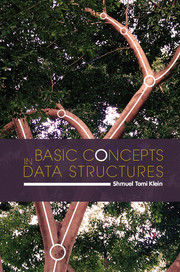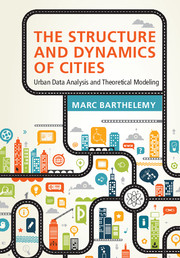Refine search
Actions for selected content:
48287 results in Computer Science
OSO volume 21 issue 3 Cover and Front matter
-
- Journal:
- Organised Sound / Volume 21 / Issue 3 / December 2016
- Published online by Cambridge University Press:
- 11 November 2016, pp. f1-f2
- Print publication:
- December 2016
-
- Article
-
- You have access
- Export citation
Narrative Modes in Acousmatic Music
-
- Journal:
- Organised Sound / Volume 21 / Issue 3 / December 2016
- Published online by Cambridge University Press:
- 11 November 2016, pp. 192-203
- Print publication:
- December 2016
-
- Article
- Export citation
Thoughts in the Field: ‘Self-reflexive narrative’ in field recording
-
- Journal:
- Organised Sound / Volume 21 / Issue 3 / December 2016
- Published online by Cambridge University Press:
- 11 November 2016, pp. 222-232
- Print publication:
- December 2016
-
- Article
- Export citation

Basic Concepts in Data Structures
-
- Published online:
- 10 November 2016
- Print publication:
- 27 October 2016

The Structure and Dynamics of Cities
- Urban Data Analysis and Theoretical Modeling
-
- Published online:
- 10 November 2016
- Print publication:
- 24 November 2016
Preface to special issue: LINEARITY 2014
-
- Journal:
- Mathematical Structures in Computer Science / Volume 28 / Issue 5 / May 2018
- Published online by Cambridge University Press:
- 10 November 2016, pp. 612-613
-
- Article
-
- You have access
- Export citation
Geometry of resource interaction and Taylor–Ehrhard–Regnier expansion: a minimalist approach
-
- Journal:
- Mathematical Structures in Computer Science / Volume 28 / Issue 5 / May 2018
- Published online by Cambridge University Press:
- 10 November 2016, pp. 667-709
-
- Article
- Export citation
The logic of the reverse mathematics zoo
-
- Journal:
- Mathematical Structures in Computer Science / Volume 28 / Issue 3 / March 2018
- Published online by Cambridge University Press:
- 10 November 2016, pp. 412-428
-
- Article
- Export citation
Oracle-guided scheduling for controlling granularity in implicitly parallel languages*
- Part of
-
- Journal:
- Journal of Functional Programming / Volume 26 / 2016
- Published online by Cambridge University Press:
- 10 November 2016, e23
-
- Article
-
- You have access
- Export citation
ON STOCHASTIC COMPARISONS FOR LOAD-SHARING SERIES AND PARALLEL SYSTEMS
-
- Journal:
- Probability in the Engineering and Informational Sciences / Volume 31 / Issue 3 / July 2017
- Published online by Cambridge University Press:
- 08 November 2016, pp. 311-329
-
- Article
- Export citation
RSL volume 9 issue 4 Cover and Front matter
-
- Journal:
- The Review of Symbolic Logic / Volume 9 / Issue 4 / December 2016
- Published online by Cambridge University Press:
- 08 November 2016, pp. f1-f4
- Print publication:
- December 2016
-
- Article
-
- You have access
- Export citation
RSL volume 9 issue 4 Cover and Back matter
-
- Journal:
- The Review of Symbolic Logic / Volume 9 / Issue 4 / December 2016
- Published online by Cambridge University Press:
- 08 November 2016, pp. b1-b2
- Print publication:
- December 2016
-
- Article
-
- You have access
- Export citation
Reasoning about multi-stage programs*
- Part of
-
- Journal:
- Journal of Functional Programming / Volume 26 / 2016
- Published online by Cambridge University Press:
- 07 November 2016, e22
-
- Article
-
- You have access
- Open access
- Export citation
Brokerage-based attack on real world temporal networks
-
- Journal:
- Network Science / Volume 4 / Issue 4 / December 2016
- Published online by Cambridge University Press:
- 07 November 2016, pp. 446-459
-
- Article
- Export citation
Linear lambda terms as invariants of rooted trivalent maps
-
- Journal:
- Journal of Functional Programming / Volume 26 / 2016
- Published online by Cambridge University Press:
- 04 November 2016, e21
-
- Article
-
- You have access
- Export citation
ROB volume 34 issue 12 Cover and Front matter
-
- Article
-
- You have access
- Export citation
Modeling customer preferences using multidimensional network analysis in engineering design
- Part of
-
- Journal:
- Design Science / Volume 2 / 2016
- Published online by Cambridge University Press:
- 02 November 2016, e11
-
- Article
-
- You have access
- Open access
- HTML
- Export citation
ROB volume 34 issue 12 Cover and Back matter
-
- Article
-
- You have access
- Export citation
‘CHASING’ THE DIAGRAM—THE USE OF VISUALIZATIONS IN ALGEBRAIC REASONING
-
- Journal:
- The Review of Symbolic Logic / Volume 10 / Issue 1 / March 2017
- Published online by Cambridge University Press:
- 28 October 2016, pp. 158-186
- Print publication:
- March 2017
-
- Article
- Export citation
